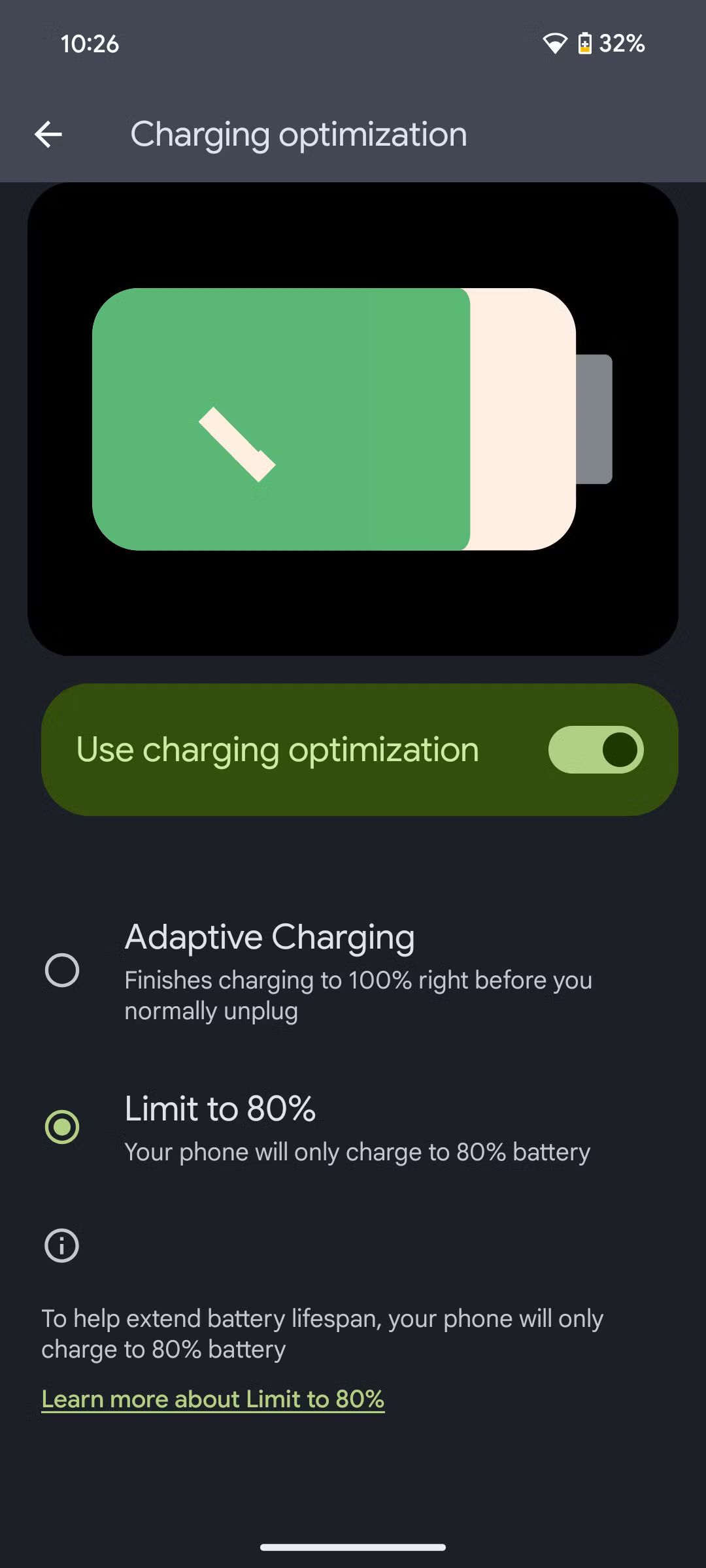In the new Android, you can choose between limited and adaptive charging. Which function is more practical?
Android 15 brings a handy feature to extend battery life.
One of the most interesting features of the new Android 15 is charging optimization. This feature was designed to slow battery degradation and extend battery life. However, Android has also retained adaptive charging. Which function is more efficient?
Adaptive versus constrained charging
The charging optimization function is a standard part of the settings menu in Android 15. However, you now have a choice between adaptive and limited charging. Let’s look at limited first.
This option stops charging when the battery reaches 80 percent. A shield icon will appear in the phone’s status bar, indicating that the charging process is complete. Similar features have been available on devices like the iPhone and Samsung Galaxy for some time, but Android 15 now brings this hard restriction right into the operating system. Thus, it will be available to owners of all phones with this operating system.
Why should you limit charging to 80%? When the phone keeps the battery at a lower charge level, it reduces the load on the battery and slows down its wear and tear. If you charge the batteries to 100 percent by default, their capacity decreases faster.
Adaptive charging is a feature that was introduced to Android back in December 2020 and has seen only minor changes since then. This feature charges the battery to 80% by default and charges the remaining 20% about an hour before you normally disconnect the phone from the charger.
Adaptive charging works best if you charge your phone mainly overnight. The system monitors your wake-up time and adjusts the charge so that the phone is fully charged when you wake up. If you don’t have an alarm set, the feature analyzes your smartphone usage and charging time to learn your mode. The process of adapting it can take several days to weeks.
 Photo: Androidpolice.com
Photo: Androidpolice.com
optimal Now you can choose between two ways to optimize charging in Android.
Why limit battery charging?
Limiting charging to 80% has a clear goal – to preserve the health of the battery, or minimize the gradual loss of its capacity. A phone with a brand new battery has 100% capacity, but after about two years or 500 charge cycles, this number can drop to 80%. A battery with a capacity of 5,000 mAh will thus have approximately 4,000 mAH after two years. Of course, it also depends on the intensity and manner of using the phone.
Factors that affect battery degradation include:
- Exposure of the battery to high or low temperatures
- Charging and discharging speed
- How much time the battery spends fully charged or completely discharged
Optimizing charging thus reduces the time the battery “spends” at 100% charge, which should contribute to its longer life. However, it does not stop the natural aging of the battery, it just slows down the process.
Does it make sense to enable charging optimization?
If you buy a new phone every year, you may find this feature unnecessary. But if you change your phone every three to four years, it makes sense to take care of its battery. Its exchange, of course, depending on the specific phone, costs approximately 100 euros. In addition, a weak battery can reduce the value of your phone at the next sale.
Whether you choose adaptive charging or capping at 80% depends on how you use your phone. Adaptive charging is suitable for people who usually charge their phone overnight, use their phone to the maximum and want to have a 100 percent charged battery available in the morning to make it last as long as possible. The limitation to 80% will be appreciated by users who want to use the smartphone for several years and want to keep the battery capacity as high as possible throughout this period.
Source: vat.pravda.sk


